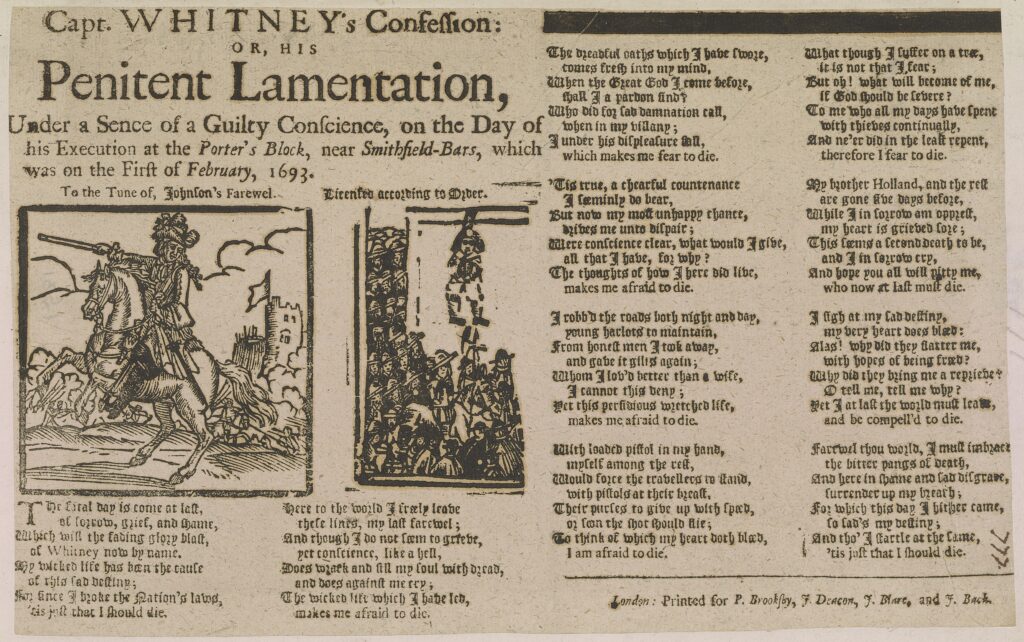About
Introduction
This glossary contains the main genres and categories of print that are associated with European popular print in roughly the period 1500-1900. It is one of the outcomes of the project European Dimensions of Popular Print Culture (EDPOP), led by Dr Jeroen Salman, that aimed to establish an international network of scholars in this field. This project was financed by the Dutch Research Council (NWO). Thanks to a small grant of Utrecht University’s Datahub Social Sciences and Humanities the glossary could be completed in 2022-2023. Two Utrecht book historians, Andrea van Leerdam and Jeroen Salman, are responsible for this final edition, but they were strongly supported by European experts in the field. Below are all the names of the scholars who provided translations, suggestions, corrections and references. We are extremely grateful for their help. This glossary can therefore be considered a collective endeavour. The glossary will eventually also function as a vocabulary for a multifunctional Virtual Research Environment that aims to harvest, categorise, visualise and analyse bibliographical and biographical data related to premodern European popular print. This EDPOP VRE is currently being developed by the Research Software Lab of the Utrecht University assisted by Andrea van Leerdam and supervised by Jeroen Salman. Shortly after its release this glossary was added to the list of authorized sources of the Library of Congress (GEMPPG): Genre/Form Code and Term Source Codes.
Rationale
The glossary is by no means exhaustive, but it is intended to offer an overview of the concepts used in several European countries by experts in the field, as an aid to further research and to offer a state-of-the-art vocabulary for cataloging early modern popular printed materials. To a certain extent this glossary remains ‘work-in-progress’. For this reason it appears online only, to allow for easy updating. We invite all experts in the field to continue sending us corrections and additions (see contact below).
One of the main challenges compiling this list was to discern modern (anachronistic), scholarly or bibliographical terms from terms and concepts that were used in the early modern period itself. Moreover, the connotations of some terms changed in the historical period under scrutiny. Our aim was not to offer a thorough linguistic or etymological analysis however, but to create a vocabulary that would help researchers find their way in this broad and heterogeneous field of study. We also deliberately created ‘anachronistic’ lemmas to cover and identify categories and genres of popular print that are commonly studied under one heading, such as ‘criminal narrative’, ‘children’s book and schoolbook’, ‘devotional literature’, and ‘medical literature’. In the cases where such modern terms were obviously not used in the period 1500-1900 we marked them with a label ‘modern concept’.
General terms
The following terms are used in the field of popular print research in different European countries.
UK: chapbooks/ cheap books/ popular print/ street literature
ESP: pliegos de cordel/ pliegos sueltos
NL: populair drukwerk/ populaire literatuur/ volksboeken
DE: Kolportageliteratur/ Populärliteratur / Trivialliteratur / Massenliteratur
IT: libri da risma/ libretto popolare/ libri comuni / libri di larga diffusione / libri a larga circolazione
FR: Bibliothèque bleue/ littérature populaire/ littérature(s)/livre(s) de colportage/ imprimés de large circulation
PL: literatura popularna/ druki popularne/ druki straganowe
Structure of the lemmas
The framework of the lemmas is as follows.
Headings
The headings of the glossary lemmas are in English.
Other languages
The heading ‘Other languages’ sums up translations of the English lemma term in Dutch, French, German, Italian, Spanish and Polish. In case the lemma term is a modern term it also includes terms which designate historical manifestations of the lemma term. In some cases we could not find similar genres or categories in a specific language, so not all lemmas offer translations in all languages. In rare cases we added other languages as well, such as Norwegian or Finnish. In the future we hope to add more translations.
Subject headings
The subject headings are not meant as a hierarchy but rather as keywords that enable users to find related genres more easily. Each genre discussed in this glossary can have multiple subject headings.
Material form
In terms of material categorization we distinguish ‘printed book’ and ‘single-sheet print’.
- A printed book is, for pragmatic reasons, understood as any printed sheet that is folded at least once. Admittedly, scholarship sometimes uses the term quire or gathering to describe pamphlets or other publications that consist of only a few pages. However, it would be hard to ascertain for every genre if it was published in one or more gatherings, in all of the languages under consideration. We therefore choose the term printed book.
- A single-sheet print is a unfolded sheet, that is either printed on one side (such as penny prints) or on two sides (such as early newspapers).
Related terms
‘Related terms’ include words in English that are either synonyms or overlapping genres, in the latter case with a link to the relevant lemma.
Navigating this website
The glossary can be accessed in several ways:
- by browsing an overview of all entries
- by searching through the full text of all entries (left column)
- by subject heading
- by material form
General works and sources used
See References
Editors
This glossary was compiled and edited by Dr Jeroen Salman (UU) and Dr Andrea van Leerdam (UU).
Acknowledgements
Collaborating authors, experts, and advisors are:
Kerewin Blanken, Helwi Blom, Miriam Borham Puyal, Jean-François Botrel, Liam Matthew Brockey, Laura Carnelos, Antonio Castillo, Arja Firet, Juan Gomis, Kornee van der Haven, Mario Infelise, Britta Juska-Bacher, Wojciech Kordyzon, Katell Lavéant, Elisa Marazzi, Sabrina Minuzzi, Martyna Osuch, Marine Parra, Marina Roggero, Massimo Rospocher, Joad Raymond, Rita Schlusemann, Antonio Serrano, Alison Sinclair, Wendelin Sroka, Lieke Stelling, David Stoker, Rozanne Versendaal, Alexander S. Wilkinson.
How to cite
Jeroen Salman and Andrea van Leerdam (eds.), Glossary of Early Modern Popular Print Genres, Utrecht University, 2023, https://popular-print-glossary.sites.uu.nl
Contact
We welcome any corrections or additions to further improve this glossary. Please send your suggestions to Jeroen Salman: j.salman@uu.nl.


